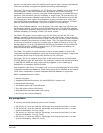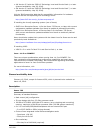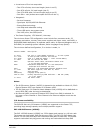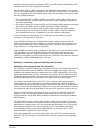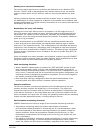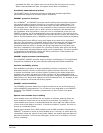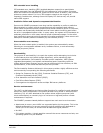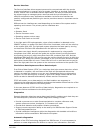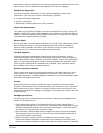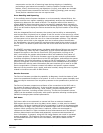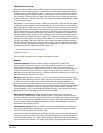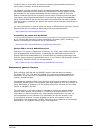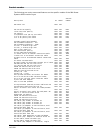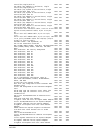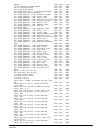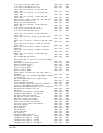
IBM United States Hardware Announcement
110-008
IBM is a registered trademark of International Business Machines Corporation
10
intermittent errors are designed to be correctly detected and isolated at the time the
failure occurs. Runtime and boot-time diagnostics fall into this category.
Stand-alone diagnostics
As the name implies, stand-alone or user-initiated diagnostics require user
intervention. The user must perform manual steps, including:
• Compact disk-based diagnostics
• Keying in commands
• Interactively selecting steps from a list of choices
Concurrent maintenance
The system will continue to support concurrent maintenance of power, cooling, PCI
adapters, DASD, DVD, and firmware updates (when possible). The determination of
whether a firmware release can be updated concurrently is identified in the readme
information file released with the firmware.
Service labels
Service providers use these labels to assist them in performing maintenance actions.
Service labels are found in various formats and positions, and are intended to
transmit readily available information to the servicer during the repair process.
Following are some of these service labels and their purpose:
Location diagrams
Location diagrams are strategically located on the system hardware, relating
information regarding the placement of hardware components. Location diagrams
may include location codes, drawings of physical locations, concurrent maintenance
status, or other data pertinent to a repair. Location diagrams are especially useful
when multiple components are installed such as DIMMs, CPUs, processor books,
fans, adapter cards, LEDs, and power supplies.
Remove/replace procedures
Service labels that contain remove/replace procedures are often found on a cover
of the system or in other spots accessible to the servicer. These labels provide
systematic procedures, including diagrams, detailing how to remove/replace certain
serviceable hardware components.
Arrows
Numbered arrows are used to indicate the order of operation and serviceability
direction of components. Some serviceable parts such as latches, levers, and touch
points need to be pulled or pushed in a certain direction and certain order for the
mechanical mechanisms to engage or disengage. Arrows generally improve the ease
of serviceability.
Packaging for service
The following service enhancements are included in the physical packaging of the
systems to facilitate service:
• Color coding (touch points): Terracotta colored touch points indicate that a
component (FRU/CRU) can be concurrently maintained. Blue colored touch points
delineate components that are not concurrently maintained -- those that require
the system to be turned off for removal or repair.
• Tool-less design: Selected IBM systems support tool-less or simple tool designs.
These designs require no tools or simple tools such as flat head screwdrivers to
service the hardware components.
• Positive retention: Positive retention mechanisms help to assure proper
connections between hardware components such as cables to connectors, and
between two cards that attach to each other. Without positive retention, hardware



